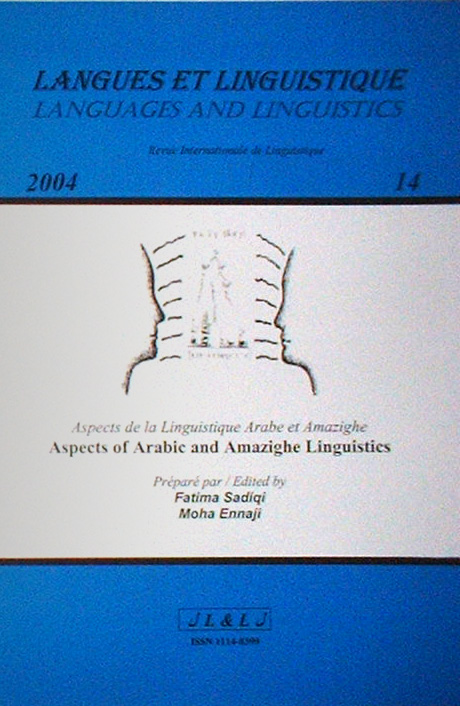Non-Polite Uses of Polite
Formulas
pp. 75-84
Abdeljalil Naoui KhirAbstract
The purpose of this article
is to show that polite formulas, which are generally used in interpersonal
exchanges as universal phenomena of politeness, have characteristics that
make them culture-specific. This is indicated by their peculiar distribution
and the range of meanings attributed to them, as well as the social and
religious connotations they carry. In the second part of this article, I
investigate the other side of the coin characterizing them; namely, their
displaced use. Here, I discuss their metaphorical use in criticism and
irony, where the clash between the polite formula and its context of use may
eradicate its politeness aspect. Given that this special use of polite
formulas makes them displaced with regard to politeness, I have avoided
calling them ‘impolite’ and opted for assigning them a new status, which I
have dubbed ‘non-polite’. I partly base my argument on the relationship
between the meaning and use of these formulas, and partly on the evaluative
value distinguishing the prefixed ‘im-’ and ‘non-’ suffixes.
Greetings, farewells, good
wishes, thanks, and other interpersonal exchanges made between individuals
in their everyday encounters or on some occasions like ceremonies or
condolences, have been termed by Ferguson (1979), ‘polite formulas’. Though
these may be universal as phenomena, their structure, domain of use and
value are culture-specific, as is shown below.
One aspect of politeness
in Moroccan culture is the wish to sound humble by assigning superiority to
the other. For example, to encourage someone to make a request is polite and
to do this politely, one is likely to use the imperative expression / ?amr
/ (order (me)), meaning that ‘ your request will be taken as an order and
not simply as a request since to be polite I should consider you as superior
to me and the request issued as an order.’
Another aspect of
Moroccan politeness is to show concern for others by indicating and showing
that their joys or sorrows are also ours, that their ‘good’ deeds deserve
encouragement and are also of some concern to us.
Finally,
politeness is also achieved by showing that any positive change, no matter
how slight it may be, needs to be noticed, encouraged or positively wished
for. This could be done through the offer of presents, as well as through
the use of a range of polite formulas. Each polite formula is suitable for
the opportunity(ies) or event(s) in question. |
